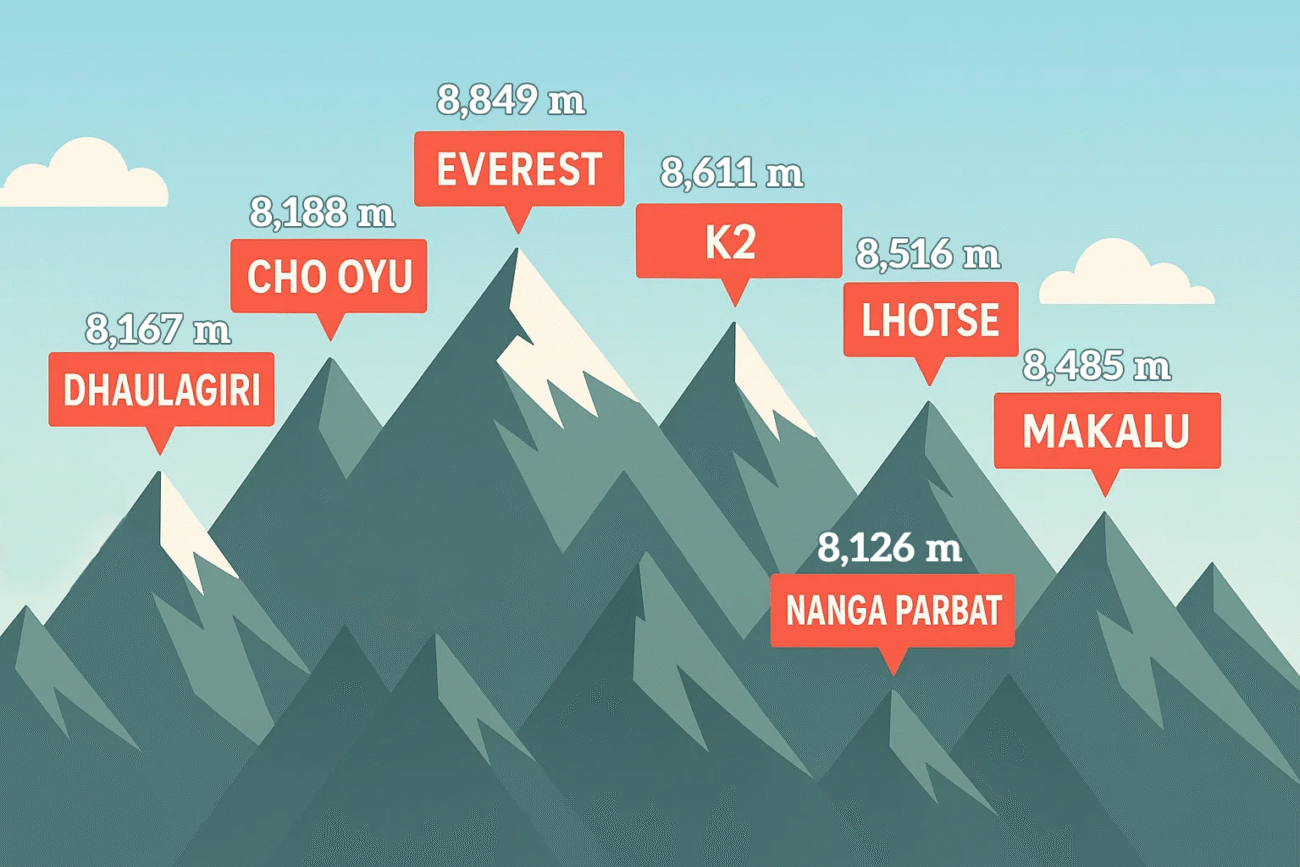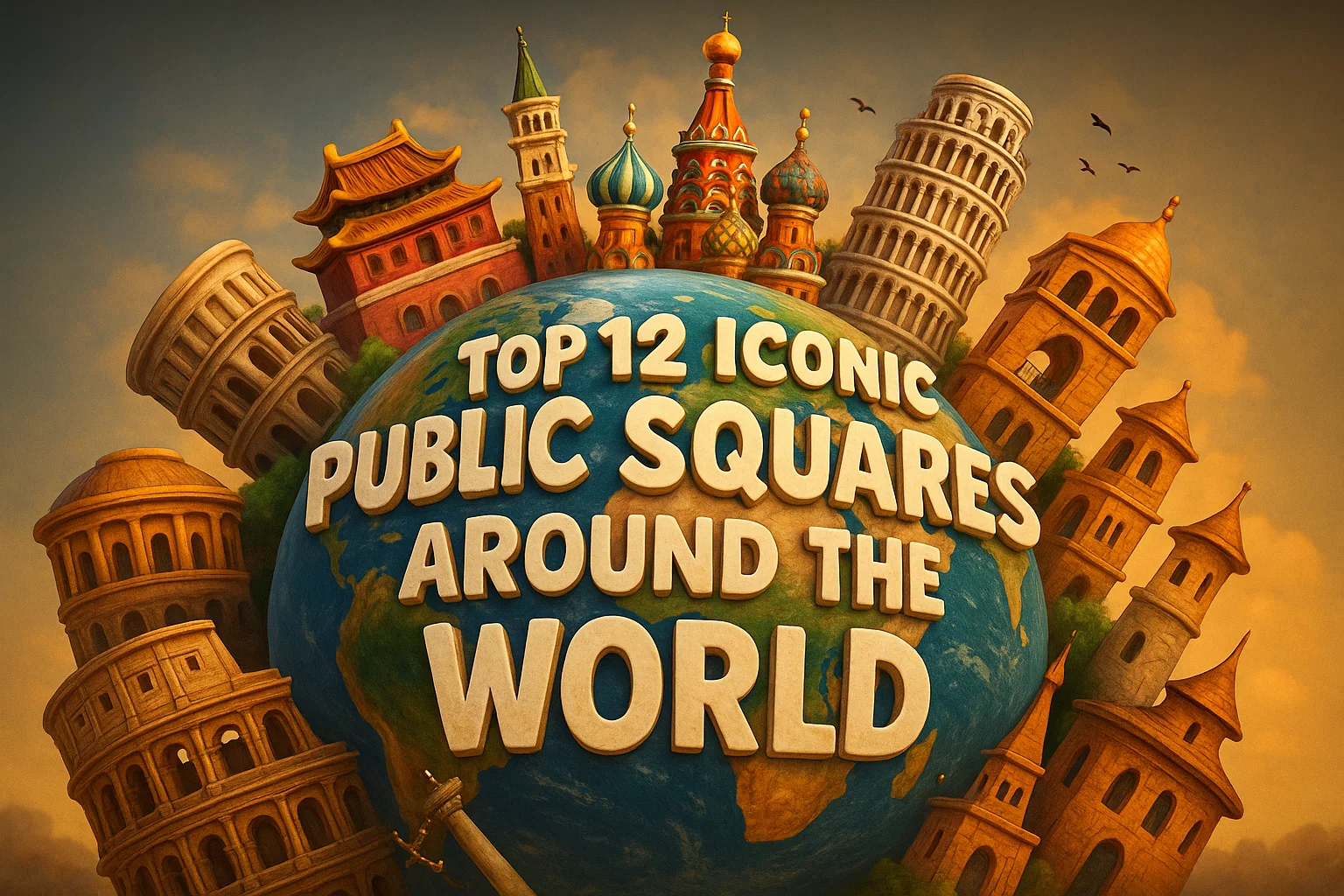The highest mountains on Earth are more than lumps of rock. They are storybooks carved in ice, relentless teachers of patience, and silent guardians of culture. Standing face-to-face with these summits even by reading about them slows the heart and widens the eyes. From Mount Everest to Annapurna, each peak offers a fresh page of human grit, natural drama, and surprising humor. In this lively tour we explore the top ten highest mountains on Earth, all soaring above 8,000 meters. We keep the language simple, the paragraphs short, and the facts wrapped in real-life tales so anyone can follow along no alpine dictionary needed worldatlas.com.
Why These Peaks Matter
Short answer: altitude. Long answer: altitude plus history, mystery, and ordinary people doing extraordinary things. These summits called eight-thousanders push human lungs, minds, and gear to the edge. Yet farmers plow potato fields below them, children play soccer in their shadows, and trekkers sip butter tea while clouds brush the ridgelines. Seeing how daily life and deadly height share a single valley is what makes the Himalaya peaks unforgettable.
1. Mount Everest – 8,849 m, Nepal/China
Ask ten strangers to name a tall mountain; nine will say Mount Everest. Sitting on the Nepal-Tibet border, Everest rises higher than any roof or skyscraper. Its local name, Sagarmatha in Nepali and Chomolungma in Tibetan, means “Goddess of the Sky.” The mountain’s fame exploded on 29 May 1953 when Tenzing Norgay and Sir Edmund Hillary stood on top.
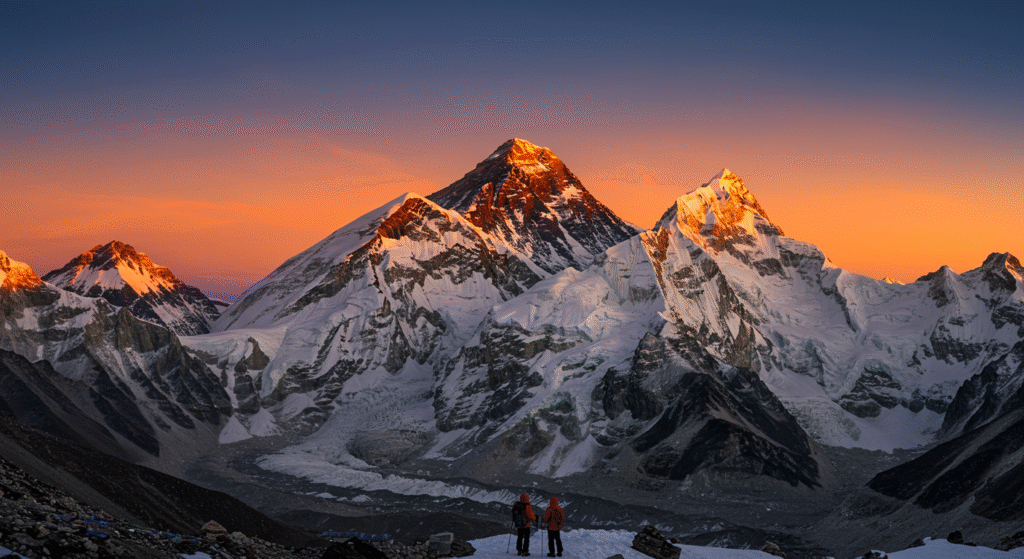
Back then they wore woolen socks and carried oxygen tanks heavier than a school backpack. Today, selfie sticks and satellite phones tag along yet the summit still demands respect. Storms can flip tents like playing cards, and the notorious Khumbu Icefall creaks louder than city traffic. Guides say the real prize is not the photo at the top but the wisdom gathered on the climb. Naturally, highest mountains on Earth lists always begin with Everest, and so does ours.
2. K2 Mountain – 8,611 m, Pakistan/China
Less known to the public but legendary among climbers, K2 mountain towers in the Karakoram Range. Locals call it Chogori, “Big Mountain,” yet many alpinists whisper “Savage Mountain.” Why? Because steep ice pillars and sudden storms turn returning alive into the main trophy. The first winter ascent did not occur until January 2021. Italian climbers made the first summit in 1954, but K2’s fatality rate once hovered near one in four.
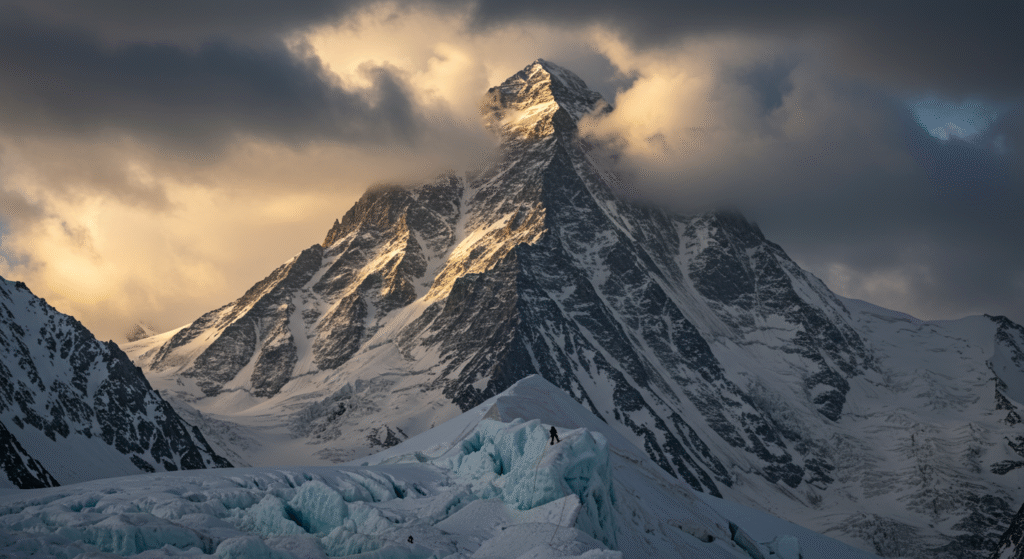
Even strong athletes must master patience: gusts at 8,000 meters can pin teams inside tents for a week. Still, K2 mountain captivates dreamers with a perfect pyramid shape jutting above endless glaciers. It reminds us that the highest mountains on Earth are not just tall they are teachers of humility.
3. Kangchenjunga – 8,586 m, Nepal/India
Kangchenjunga means “Five Treasures of Snow,” hinting at its five white summits. For centuries the Sikkimese believed the peak sacred; early climbers pledged to stop a few steps short to honor local faith. Kangchenjunga is often called the queen among Himalaya peaks. Monsoon clouds swirl around its ridges, then part like curtains to reveal turquoise lakes.
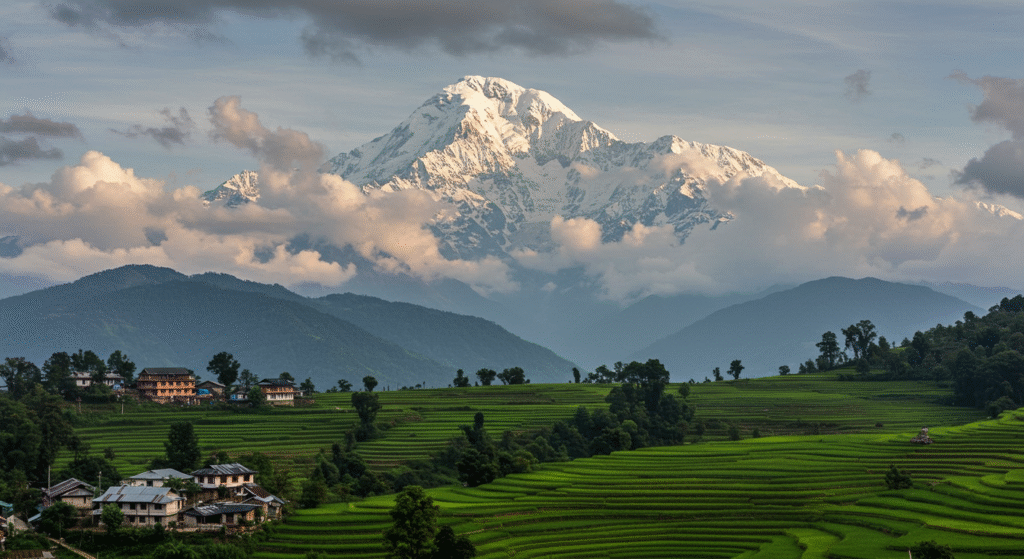
In 1999 trekkers found footprints they swore belonged to the Yeti another tale that keeps tourists booking flights. Though slightly shadowed by Everest’s fame, Kangchenjunga’s remote valleys showcase how ordinary villagers coexist peacefully with one of the highest mountains on Earth.
4. Lhotse – 8,516 m, Nepal/China
Linked to Everest by a narrow saddle, Lhotse wears two faces. One is friendly to climbers seeking a quieter Everest-adjacent experience. The other the Lhotse South Face is a 3-kilometer wall as smooth as a granite billboard. It defied attempts until 1990. Helicopter pilots avoid flying too close, calling it the Earth’s steepest mirror.
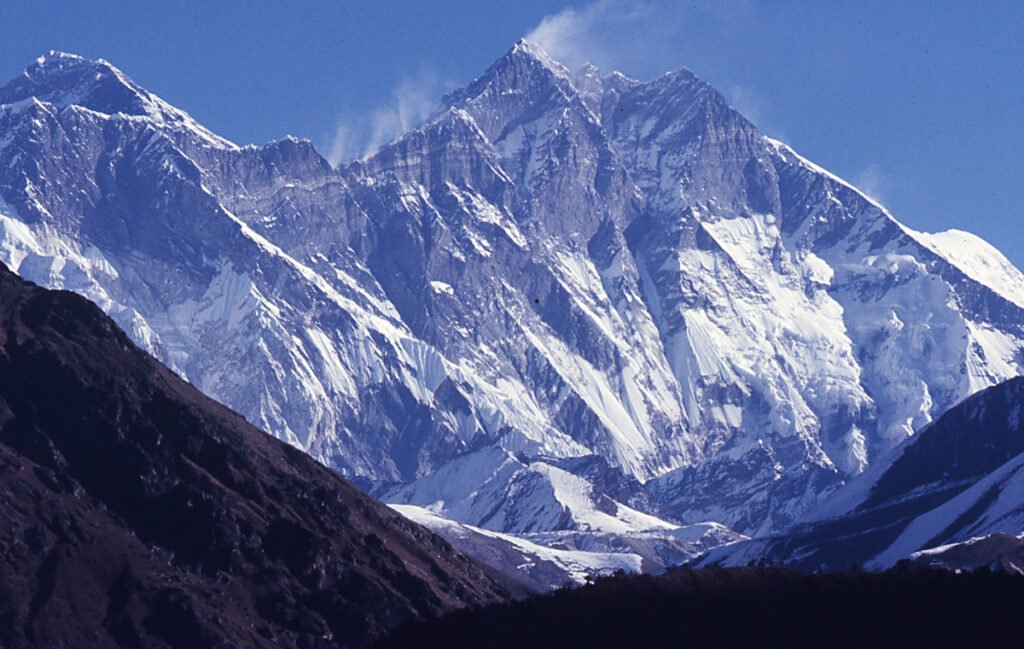
For standard expeditions, following the Everest path to Camp 3, then veering right, feels like switching lanes on a mountain highway. But make no mistake: thin air, brittle ice, and shifting crevasses demand full focus. Lhotse’s close position cements its role in any debate about the highest mountains on Earth and keeps Sherpa guides busy each spring.

Enjoy playing the Wordle game, where you can challenge your mind and language skills by trying to guess the hidden word within a limited number of attempts. Each guess provides you with clues about the correctness and position of the letters, adding excitement and suspense to every round.
5. Makalu – 8,485 m, Nepal/China
Picture a four-sided stone pyramid painted white and pink at dusk. That is Makalu, the loner of the Mahalangur Himal. Standing by itself, it catches storms head-on. French climbers first summited in 1955, bringing baguettes and a spirit of adventure. These days, teams still haul espresso makers to Base Camp because coffee feels like armor against cold.
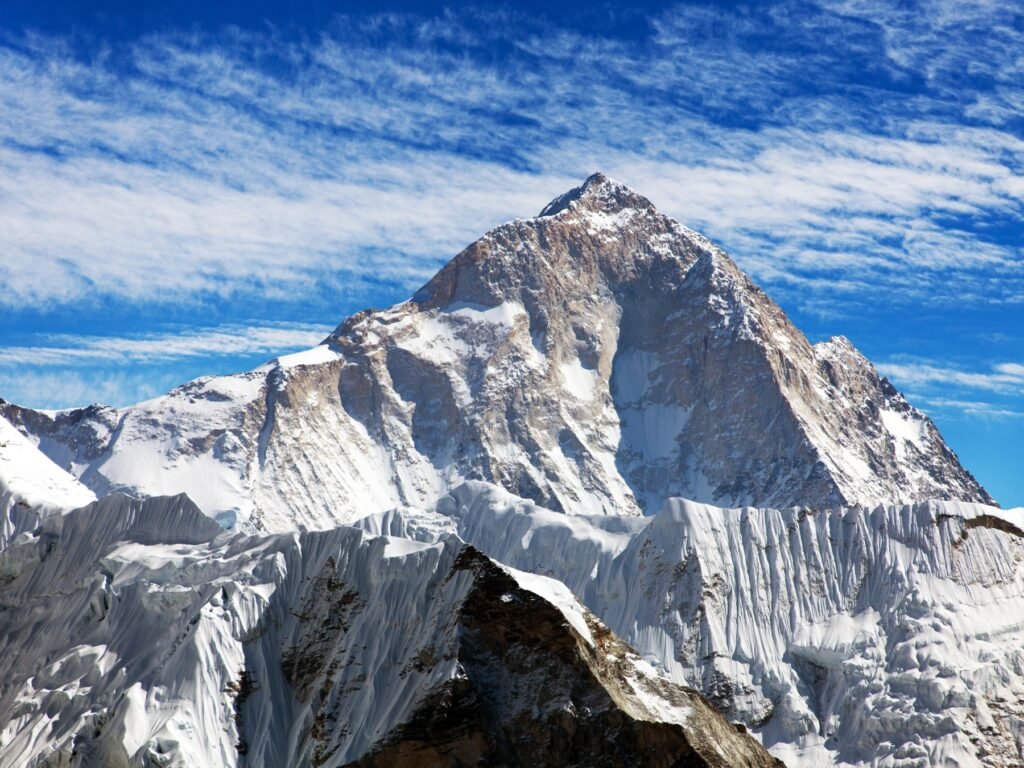
Makalu seldom graces postcards, yet its knife-edge final ridge tests balance like a circus wire. The vista at the top includes not only Everest but half a dozen Himalaya peaks sparkling under the sun proof again that the circle of eight-thousanders is tight and breathtaking.
6. Cho Oyu – 8,188 m, Nepal/China
If Everest is the stern professor, Cho Oyu is the approachable coach. Sitting 20 kilometers west of Everest, its slopes are considered the easiest of the eight-thousanders. The standard route winds across gentle glaciers, so many newcomers choose Cho Oyu as a first taste of the death zone. Still, “easy” is relative: temperatures can drop to –30 °C, and avalanches have no mercy. The name Cho Oyu translates to “Turquoise Goddess,” a nod to how its flanks turn blue under clear skies.
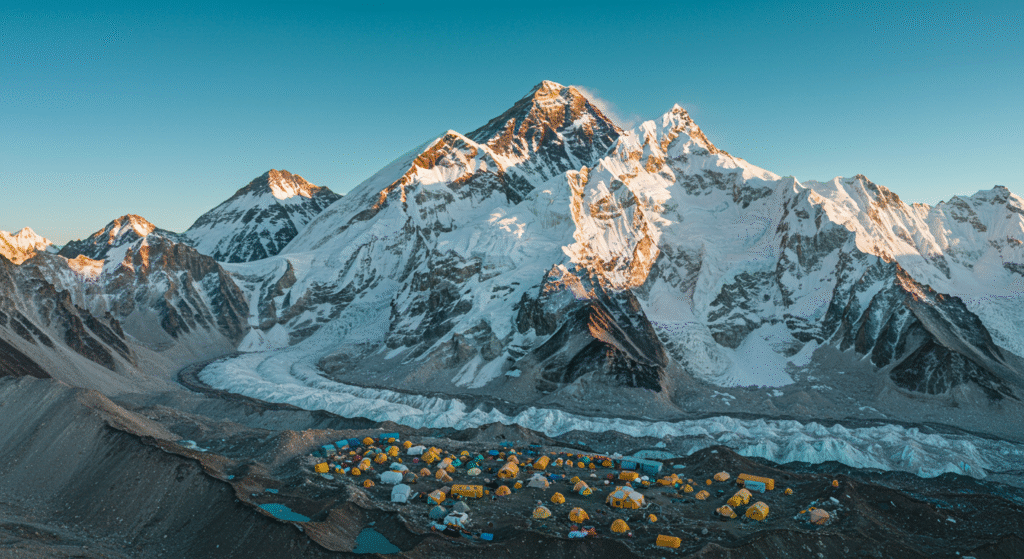
On summit day climbers often spy the yellow windsock of Kathmandu Valley far to the south, then return with stories that lure friends to chase the highest mountains on Earth next season.
7. Dhaulagiri I – 8,167 m, Nepal
Drive west from Pokhara, cross rickety bridges, and a week later the white wall of Dhaulagiri suddenly fills every window frame. Farmers along the trail wave and ask, “Going to the White Mountain?” Yes indeed. Dhaulagiri comes from Sanskrit words for dazzling white rock. Unlike the plush tea lodges near Everest, the Dhaulagiri region feels raw.
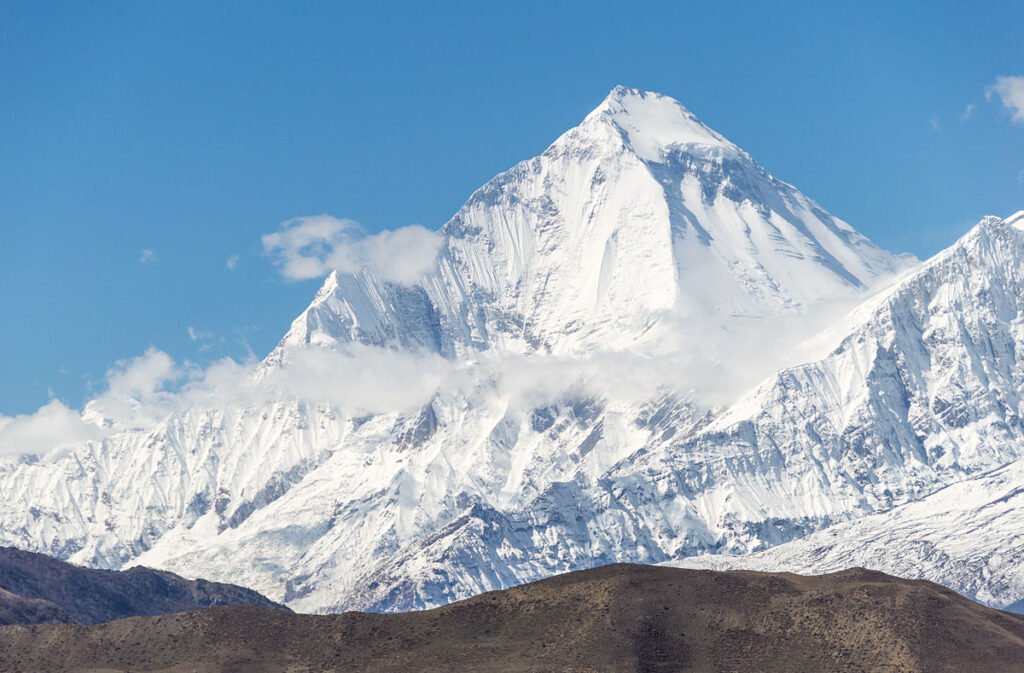
Yak caravans haul rice sacks, and snowfall can bury tents in minutes. The French-Swiss first ascent in 1960 featured an airplane drop of supplies on a plateau, an early taste of aerial logistics. Today, small helicopters buzz below ridge lines, but the climb remains a bruiser. Slabs of blue ice tilt like giant slides. With a summit that pokes above morning clouds, Dhaulagiri rests proudly in any top-ten chart of highest mountains on Earth.
8. Manaslu – 8,163 m, Nepal
The round domes of Manaslu earn it the nickname “Mountain of the Spirit.” Before roads scratched the valley walls, getting to Base Camp meant a week of walking behind mule trains. Even today, the path passes prayer wheels, bamboo forests, and landslide rubble. In 2012 a gigantic avalanche swept part of Camp 3, reminding climbers that calm slopes can turn hostile fast. Yet many teams succeed, partly because local lodges serve hot momo dumplings that lift morale.
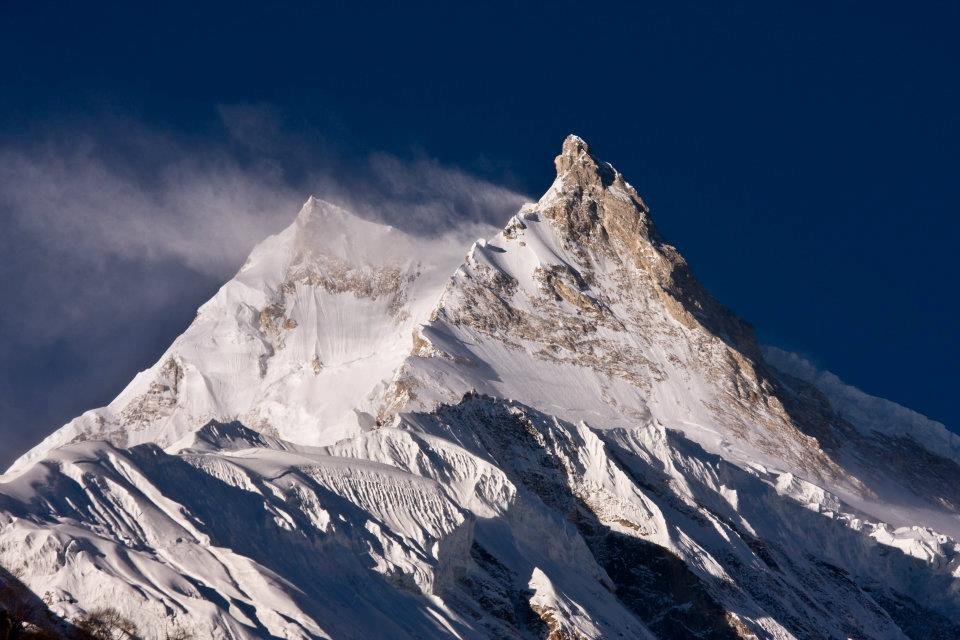
Manaslu also launched a trend of hybrid expeditions clients ride helicopters to Base Camp, then trek out, merging comfort and culture. That blend mirrors the broader magic of the Himalaya peaks: adventure spiced with human warmth.
9. Nanga Parbat – 8,126 m, Pakistan
Drive the Karakoram Highway, and suddenly Nanga Parbat’s Rupal Face rises 4,600 meters almost vertically enough elevation to stack five Empire State Buildings. Early maps labeled it “Killer Mountain” after a string of tragedies in the 1930s. Hermann Buhl’s solo summit in 1953 remains a mountaineering miracle: he finished the final leg overnight, standing alone on the top at dawn. Modern gear helps but doesn’t tame the mountain.
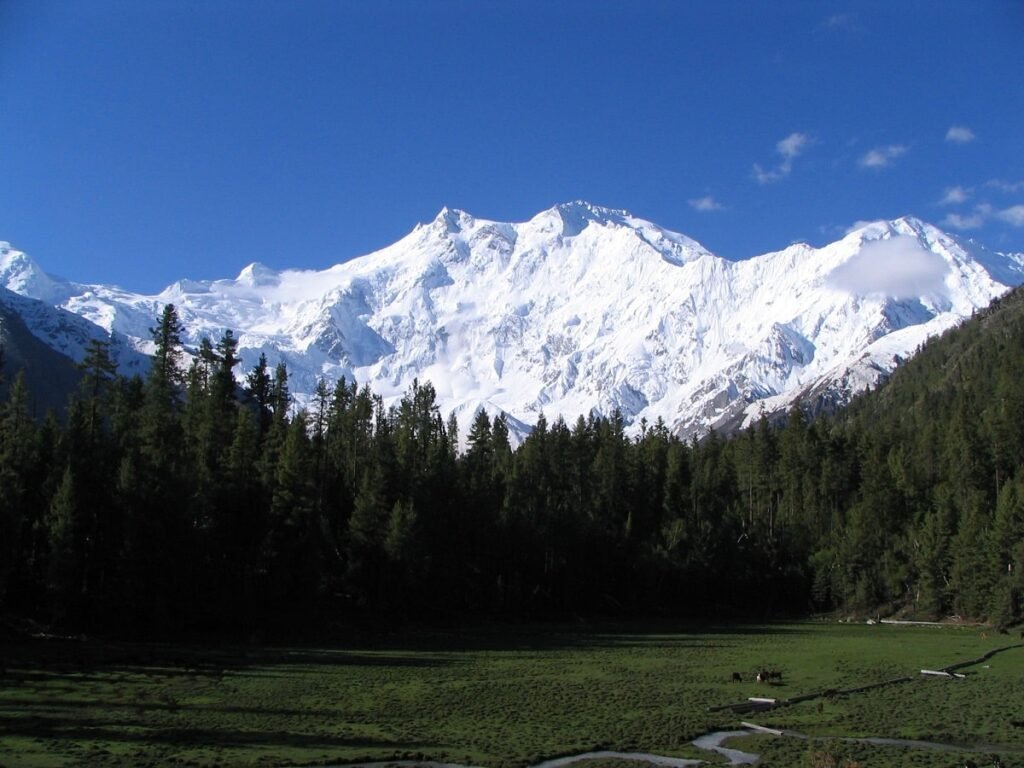
When winds blitz the ridge, climbers huddle like chess pieces tipped by a careless hand. Villagers in the nearby Fairy Meadows meadows rent ponies and offer yak milk tea, adding charm below the menace. Nanga Parbat reminds readers that the highest mountains on Earth can be hauntingly beautiful and brutally unforgiving in the same heartbeat.
10. Annapurna I – 8,091 m, Nepal
Statistically, Annapurna I is the most dangerous of all eight-thousanders. Avalanches barrel down its south face like runaway freight trains. Even so, the 1950 French ascent inspired generations Maurice Herzog’s book Annapurna sold millions, proof that readers adore vicarious frostbite. Trekking around the broader Annapurna Massif is safer and hugely popular. Tea-house owners greet travelers with apple pies baked from high-altitude orchards.
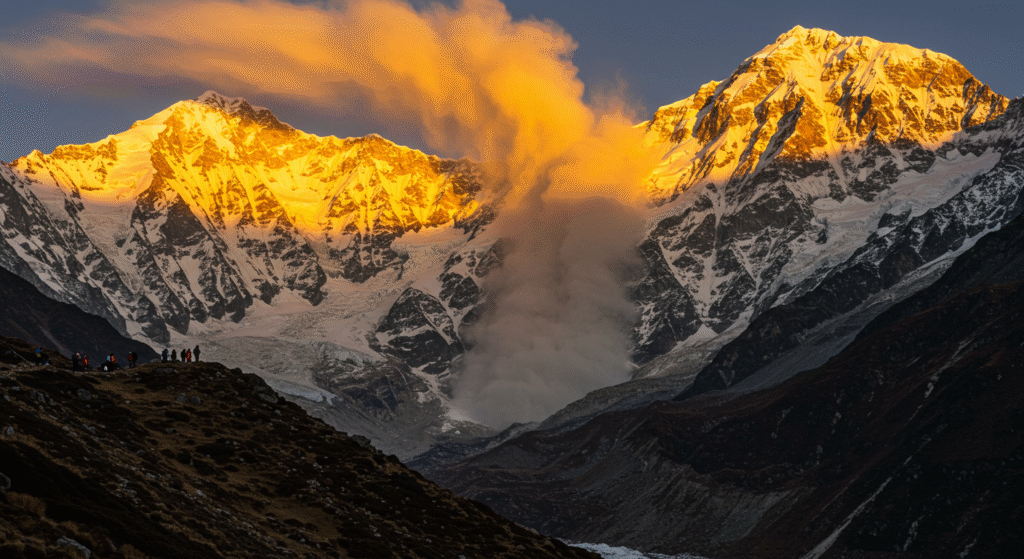
At sunrise the massif glows gold, dazzling tourists who never guess that fatal seracs lurk above. Each year a handful of elite climbers attempt the actual summit. Their daring keeps Himalaya peaks lore alive and anchors Annapurna’s place in the catalog of highest mountains on Earth.
Life Below the Summits
You might picture these giants as lonely spires, but villages cluster in the valleys. Children herd goats while silver cylinders of dried yak dung dry on roofs. During the 2015 Nepal earthquake, walls cracked, yet locals rebuilt before the next tourist season. Their resilience matches the peaks rising above them.
On the Pakistan side, apricot trees decorate Baltistan villages below K2 mountain. In summer, climbers share cricket matches with porters. Laughter replaces national headlines. This human dimension turns statistics into stories and why writing about the highest mountains on Earth never gets old.
Altitude Hacks for Travelers
- Slow and steady wins the lungs. Climb no more than 500 meters sleeping height per day above 3,000 meters.
- Hydrate like a camel. Thin, cold air evaporates sweat fast. Herbal tea counts.
- Learn basic phrases. Saying “Namaste” in Nepal or “Salaam” in Pakistan opens doors faster than money.
- Pack humility. Weather flips without apology. Turn back if clouds swell. Even the pros retreat.
Following these tips lets casual trekkers enjoy safe glimpses of the Himalaya peaks and, from a distance, salute the highest mountains on Earth.
Final Thoughts
The highest mountains on Earth are not just landmarks; they are living theaters where geology, culture, and courage collide. Snowflakes that gather on Everest drift into rivers that water rice paddies in India and coffee farms in Kenya. A Sherpa guiding a tourist today might use earnings to send her child to college tomorrow. And someone reading this simple article may decide to hike a local hill, breathing deeper, eyes lifted to a bigger sky.
Whether you dream of stepping onto a glacier or prefer following expeditions online, remember: each of the ten peaks above represents more than height. They symbolize human curiosity, cooperation, and respect for forces far older and larger than ourselves. Keep that image as you plan your next adventure grand or modest and may every horizon remind you of these 8,000-meter giants that truly touch the sky.
Discover the world’s most iconic public squares, where history, culture, and vibrant life come together. Explore breathtaking architecture and lively atmospheres in our top 12 picks. Dive into the heart of global cities visit now and experience these unforgettable urban gems!


